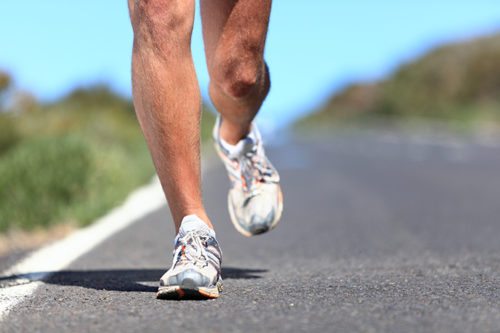Exercise and PAD are an important combination if you want to avoid pain when you move. You see, if you have
Peripheral Arterial Disease (PAD) you may experience painful leg cramps. That’s because, with PAD, your atherosclerosis (hardened or narrowed arteries) limits blood flow to your legs. And this lack of blood flow leads to leg pain, especially when you walk or exercise.
Surprisingly, even though it hurts to move, increasing your movement can help manage and reduce your PAD pain. That’s why physical activity is so important for anyone living with this condition.

Exercise and PAD
Even though our country is starting to emerge from the coronavirus outbreak, you might have gotten out of your gym routine and started home workouts. That makes a lot of sense, especially if you have compromised health because of underlying conditions like PAD. But, it doesn’t mean you have to give up on your exercise routine. It just needs to change a little.
In fact, there’s great reasons to keep exercising, even in these scary times. Research suggests that getting mild to moderate exercise, every day, can boost your immune system and help control your PAD symptoms. Just remember, for both this outbreak and your PAD, “moderate” is the key. Anything too intense could leave you hurting, and reduce your immune response.
Smart Exercises for PAD
Since walking is one of the best workout options for people with PAD, why not simply take your workouts outside? Pick a quiet outdoor spot and stroll away. Bonus: exercising outdoors gets you in nature, which can help calm anxiety—something many of us are grappling with right now.
Go for as long as you can, even working up to a slow jog if you’ve discussed this with your vein specialist. Just keep your distance from any other outdoor workout warriors—six feet is the recommended length. This way, we can work together to prevent the spread of disease, without sacrificing your personal fitness.
Treating PAD to Make Exercise Easier
When you have PAD, walking can trigger pain. (We call this claudication.) But exercise improves PAD symptoms over time. In fact, new research in JAHA shows that walking fast enough to cause this pain is actually important. Because, after six and 12 months, study participants who kept up a walking pace that caused leg pain or discomfort walked noticeably longer distances per minute than study participants who walked at a comfortable pace. (Or who skipped walking workouts altogether.)
In contrast, research from the National Institute of Aging suggests that taking the blood pressure medication telmisartan doesn't improve walking performance for patients with PAD. (Though it can reduce your risk for heart attack and stroke.) Still, that doesn't mean other treatment options won't help you walk better with PAD. Because, over time, treating your PAD in other ways can actually make it less painful to exercise. In fact, new studies show that
treating PAD with angioplasty gets more oxygen to your legs. After treatment, researchers found that patients experienced less leg fatigue and breathlessness. (Even when they exercised at the peak of their efforts!)
What does that mean for you? If you're living with PAD, keeping active can help you stay healthy. But you may need more help--and PAD treatment--in order to exercise without pain. Ready to get more active? Reach out to our Houston and Dallas area arterial specialists
for an appointment today. We are happy to offer
a PAD assessment, and help you find the relief that you're seeking!
Source Page: https://texaseva.com/sources/

